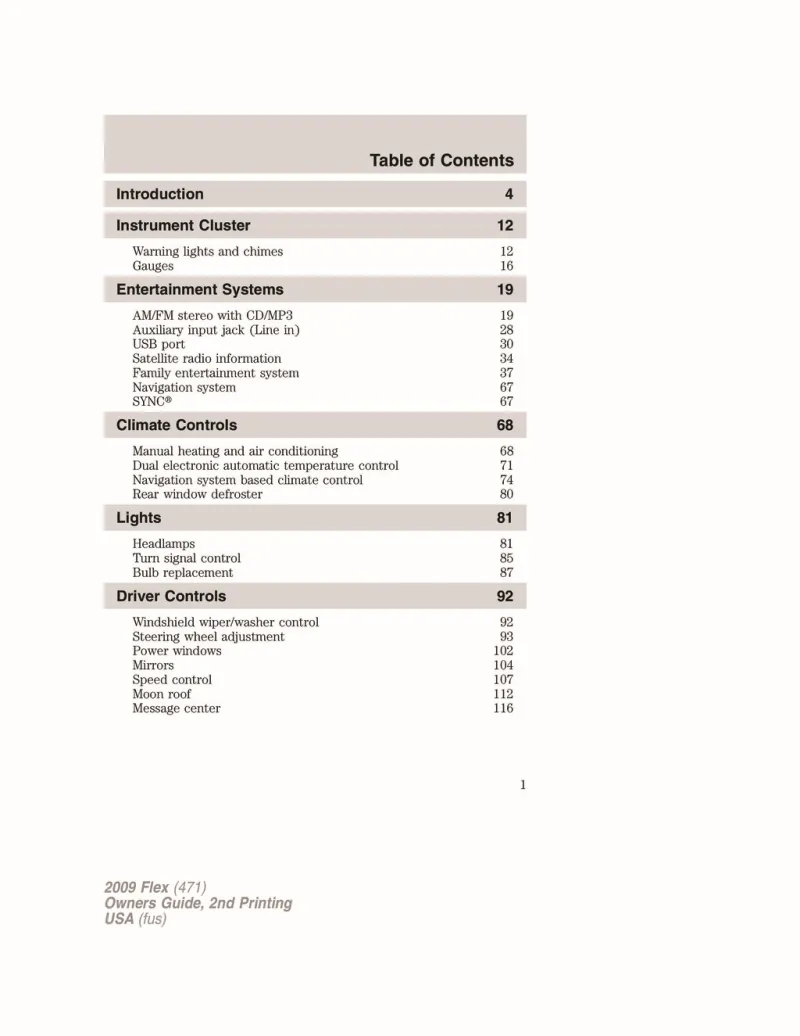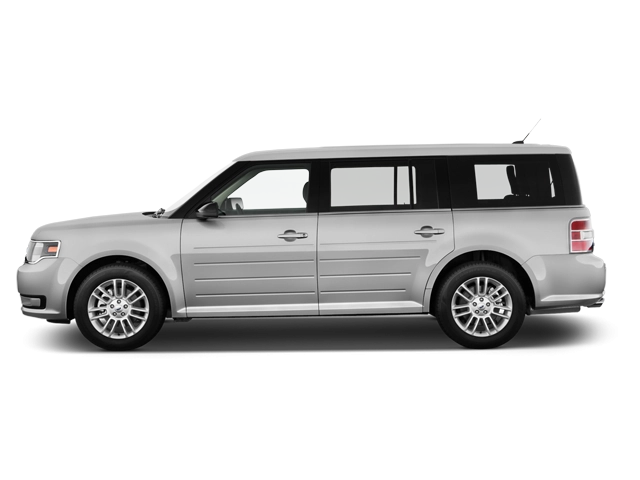2009 Ford Flex Owner's Manual

Table of Contents
2009 Ford Flex Overview
Introduction
The 2009 Ford Flex is a striking and innovative midsize crossover SUV that commands attention with its unique boxy design and spacious, comfortable interior. Ideal for families and individuals alike, the Flex successfully blends practicality with style, making it a versatile choice for those seeking ample passenger room and cargo space without compromising on aesthetics. Its engaging driving dynamics and a suite of modern features make the Flex a commendable option in the growing crossover market.
Powertrains
The 2009 Ford Flex offers an impressive powertrain lineup to cater to diverse driving needs. Standard models come equipped with a robust 3.5-liter V6 engine, delivering a peppy 262 horsepower paired with a six-speed automatic transmission for smooth gear changes. For those desiring a bit more muscle, an optional turbocharged 3.5-liter V6 engine generates an exhilarating 355 horsepower, offering thrilling performance without sacrificing efficiency. Both powertrains allow for front-wheel drive or all-wheel drive capabilities, enhancing handling and traction under various road conditions.
Trims
The Flex is available in three well-equipped trims: SE, SEL, and Limited. The base SE trim includes essential features such as keyless entry, tri-zone climate control, and a premium audio system. The SEL trim adds luxury touches like leather upholstery, upgraded sound system, and a rearview camera, while the Limited trim tops the lineup with lavish amenities, including a navigation system, power-folding third-row seating, and a panoramic sunroof, ensuring a luxurious driving experience.
Features
The 2009 Ford Flex is packed with thoughtful features designed for comfort, convenience, and safety. Standard amenities include a user-friendly infotainment system, Bluetooth connectivity, and ample cargo space with versatile seating configurations. Safety is prioritized with advanced features such as stability control, anti-lock brakes, and multiple airbags. The Flex also boasts numerous optional upgrades, including satellite radio, a rear entertainment system, and a premium navigation package.
Owners Manual
User manual download
The Ford Flex owner manual for the 2009 model year is to be found in PDF downloadable format on this page. The owner manual for the model year 2009 is free and in English, but the repair manuals are usually not easy to get and may cost more.
Manual Questions
Fill the form below and someone will help you!

